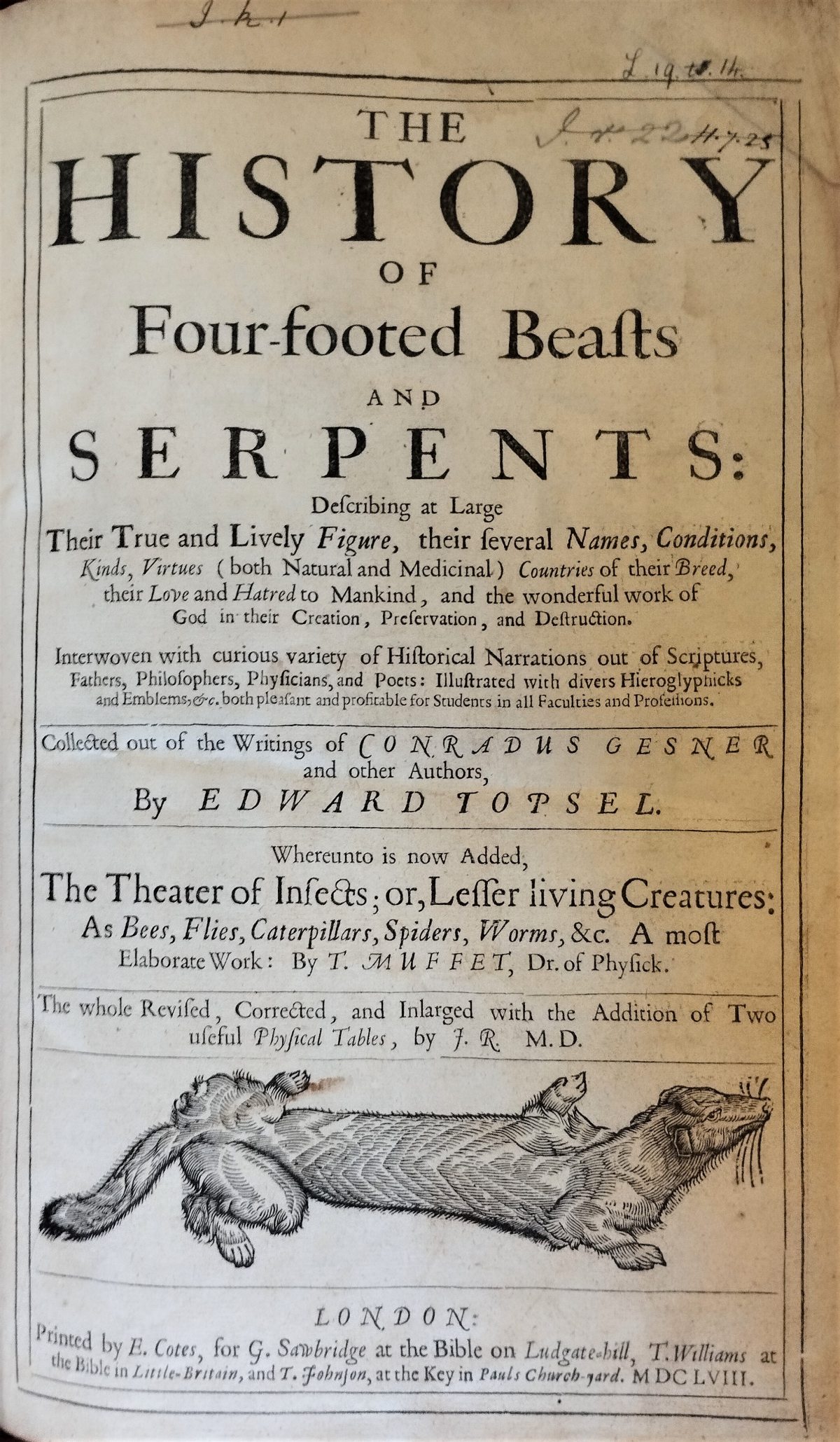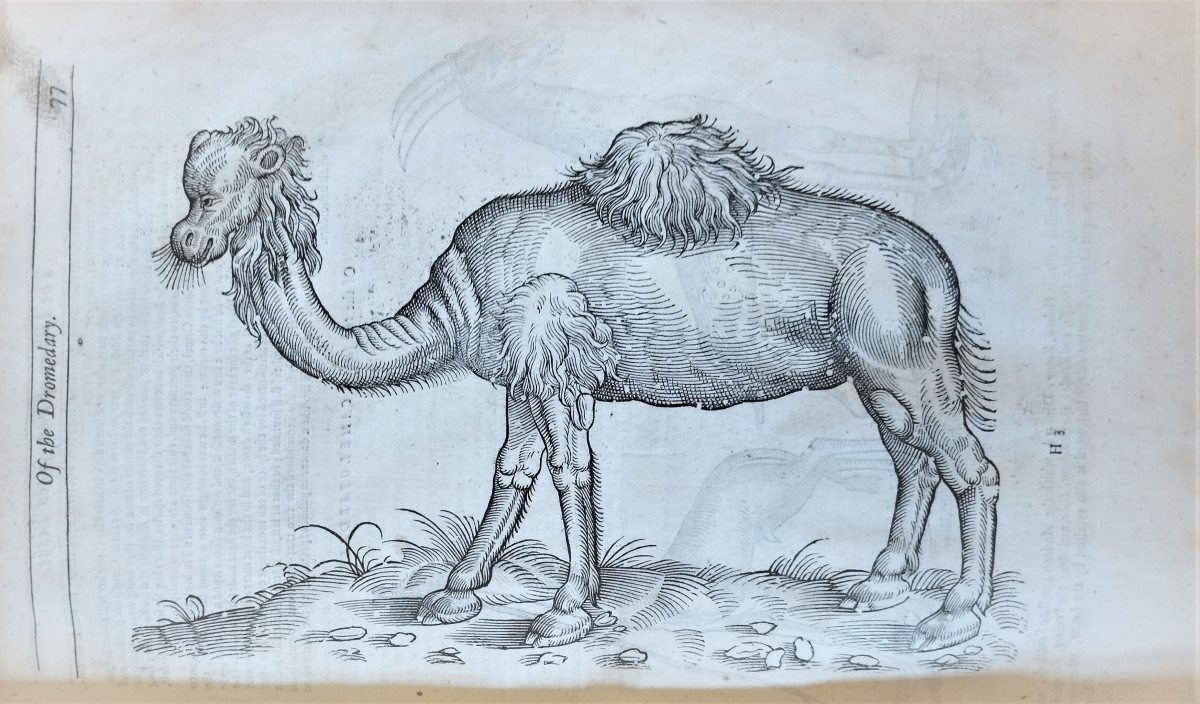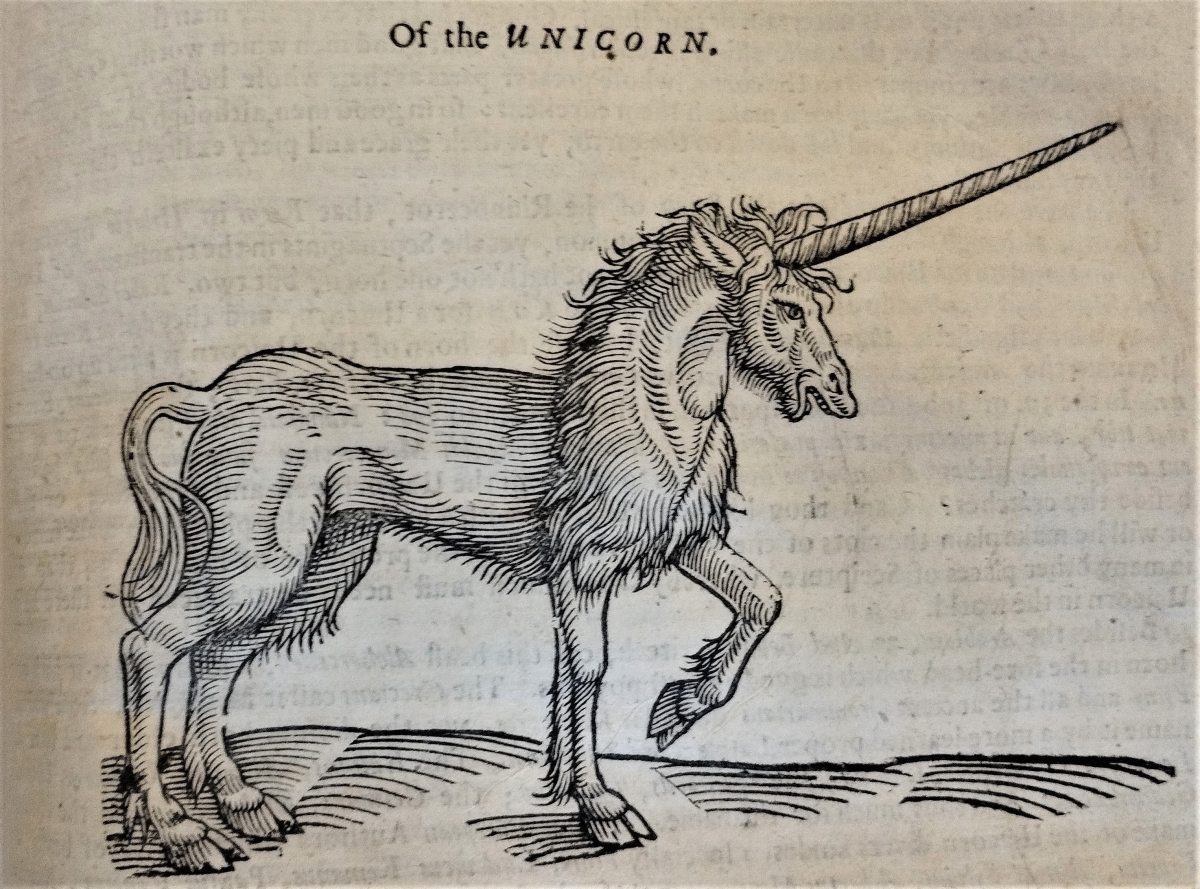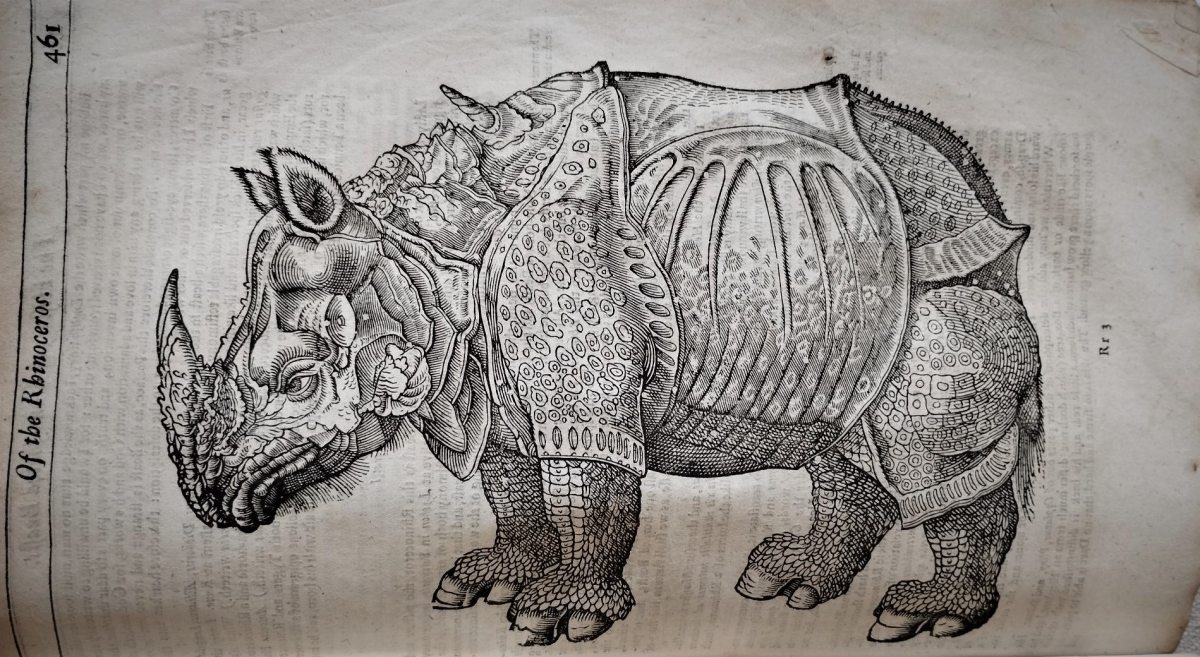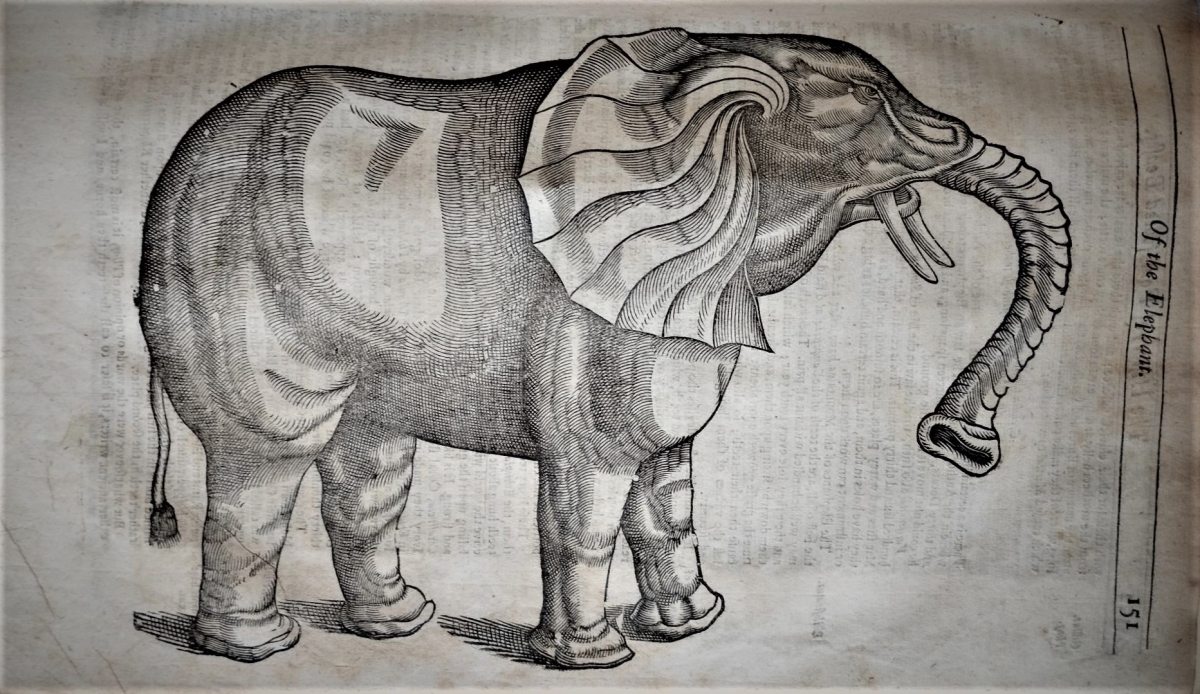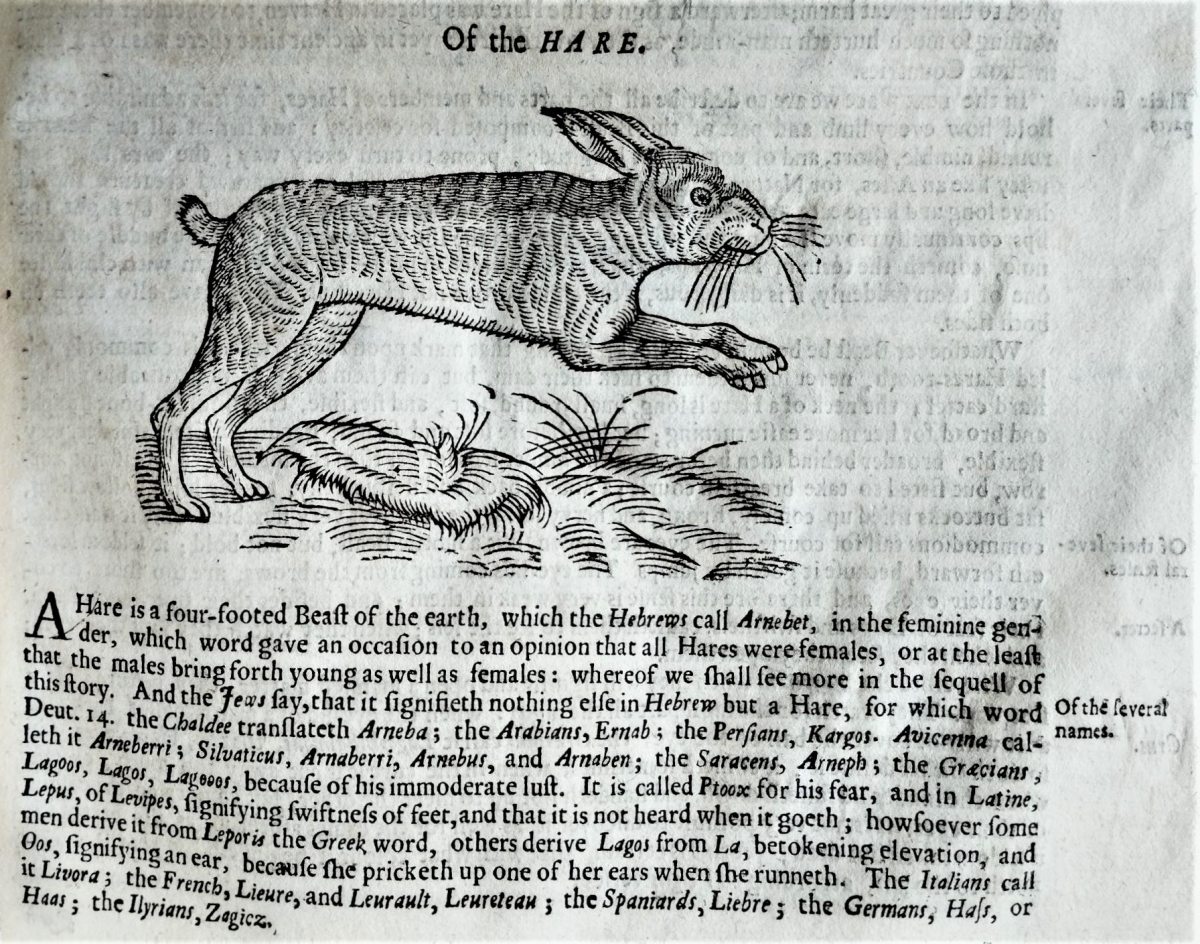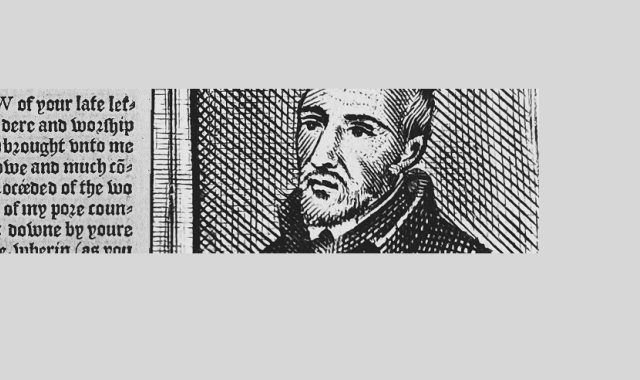Natural and mythical histories
The History of Four-footed Beasts and Serpents, by Topsell, Edward. Printed in London by E. Cotes, G. Sawbridge and others, 1658. Lower Library, L.19.14
The horns of unicorns […], being beaten and drunk in water, doth wonderfully help against poyson.
This expansive work of early Zoology combines Topsell's earlier The History of Four-footed Beasts (1607) and The History of Serpents (1608). Not being a naturalist himself, he relies entirely on earlier authorities, most notably the Historiae animalium of Conrad Gessner – a friend and correspondent of John Caius – from which many of the detailed woodcuts are also taken.
However, this reliance exclusively on older sources results in some eyebrow-raising inclusions amongst a more familiar zoological line-up, with the Gorgon, Sphinx, Manticore, Lamia, Dragon and Unicorn all having detailed entries. He also often repeats ancient legends, leading to such far-fetched claims as weasels giving birth through their ears, apes being terrified of snails, and elephants – apparently sworn enemies of dragons – worshipping the sun and moon.
When it comes to the existence of the unicorn, he surveys their appearance in a variety of ancient sources, including the ultimate authority of their mention in Psalm 92 of the Bible. Believing to have settled the matter, he goes on to discuss the various kinds of unicorn, the countries in which they can be found (mainly India and Ethiopia), and the medicinal uses of their horn.
The medicinal virtues he claims for unicorn horn are numerous, including curing epilepsy, pestilent fever, worms of the mouth or stomach, whitening the teeth, and for use ‘against the bitings of ravenous dogs’. Seen as something of a panacea, rich men would apparently put little pieces in their drinking cups as a preventative measure. But, he claims, unicorn horn’s most prized attribute was its effectiveness against all kinds of poison.
Due to its high price, Topsell warns against unscrupulous merchants attempting to pass off lesser horns as those of unicorn. He relays that a reliable test for whether you have the genuine article is to poison two pigeons with arsenic, and to give only one of them some of the powdered horn: ‘the one which drinketh a little of the true unicorns horn will be healed, the other will die.’ Although he admits, ‘I do leave this manner of trial unto rich men’.
You can see some curious entries from this text, including the unicorn, in the gallery.
This book was bequeathed to the Library by Sir James Burrough Miles, Master of Gonville and Caius from 1754 to 1764.
The Hippocratic corpus << Natural and mythical histories >> Powers of sympathy


